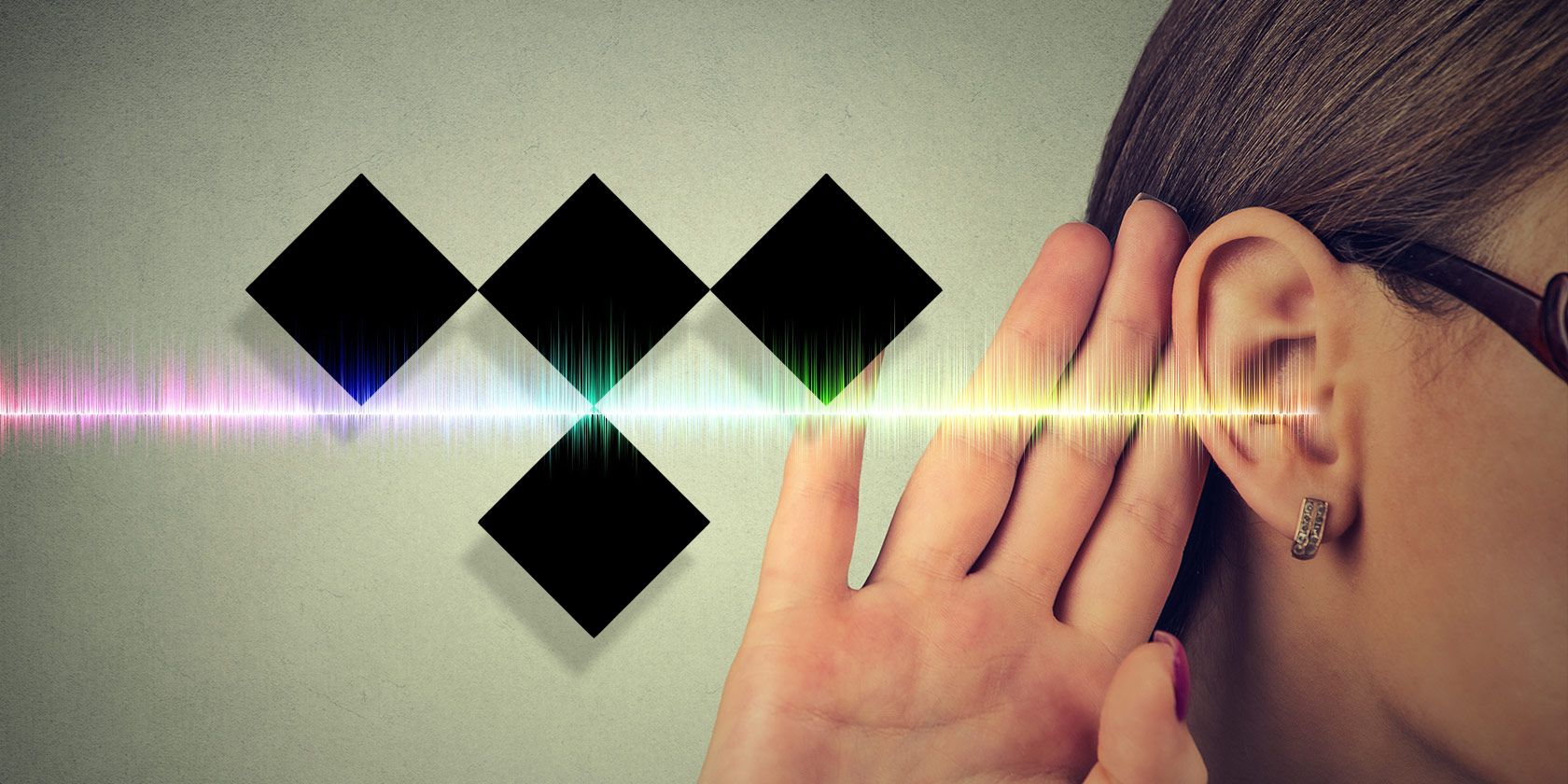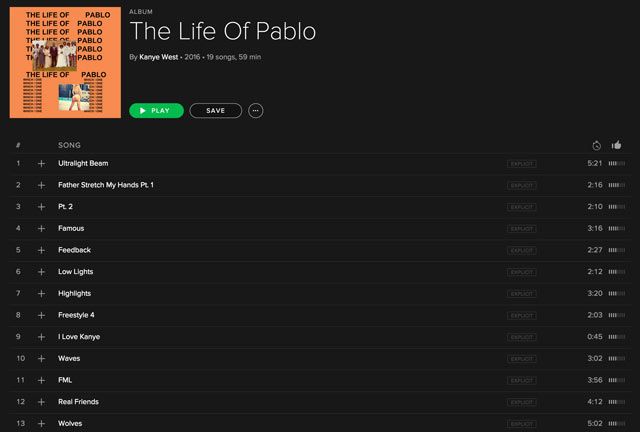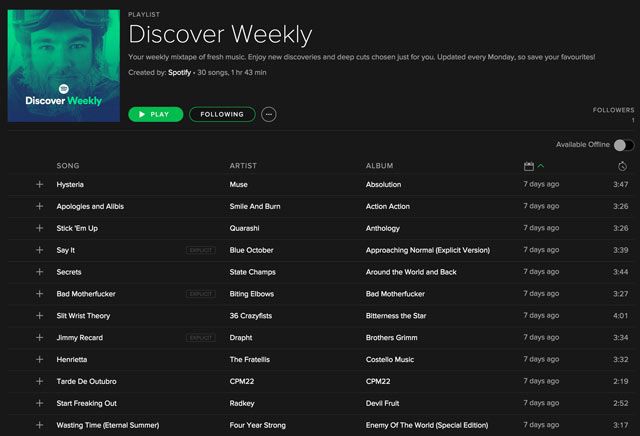This time last year we cast a critical eye over TIDAL, Jay Z’s artist-owned music streaming service, and decided it was doomed to fail. We thought that the $19.99 asking price was too steep for lossless audio streaming — something most people won’t even be able to appreciate — and that the regular $9.99 tier was too similar to the other streaming services out there to convince anyone to switch.
One year on, we thought we’d check in to see if TIDAL is now worth using. After all, with old holdouts like The Beatles giving way to the inevitable, streaming services are a bigger deal than ever.
The Exclusives Aren’t Exclusive
Kanye West can be an incredibly divisive figure but there’s no denying the popularity of his music. He’s collaborated with Jay Z in the past, so it was no surprise that his latest album, The Life of Pablo, was going to be a TIDAL exclusive.
Except that it isn’t. Just two months later The Life of Pablo is now available to stream on Spotify, Apple Music, and other major streaming services. That’s not very exclusive. This switch away from being "exclusive" to Apple Music has clearly paid off too, with The Life of Pablo topping the album charts as a direct result of increased availability.
Even Taylor Swift, who has been a major critic of Spotify and was one of the first artists to invest in TIDAL, isn’t keeping her music exclusively on the service. You won’t find her work on Spotify but it IS available on Apple Music. Despite their previous high profile fight, T-Swizzle and Apple are pretty friendly at the moment, with Swift even appearing in a recent Apple ad. There’s no reason to think she’ll be pulling her music from the service anytime soon.
From the get-go, TIDAL planned to differentiate itself from Spotify and Apple Music with exclusive albums. If the service can’t even keep Kanye West’s album to themselves for longer than a few months, it doesn’t look like the strategy is working well. Right now, there doesn’t seem to be much reason to join TIDAL if the "exclusives" will be on every other streaming service a little while later anyway.
Even Jay Z Is Worried About TIDAL
Even Jay Z, who acquired TIDAL for more than $55 million back at the start of 2015, is beginning to seem worried that he’s picked up a dud. The Verge reports that he’s preparing to sue the service’s former owners over inflated subscriber numbers.
When Jay Z bought the company, he was told there were 540,000 subscribers. Not a huge amount, but not an insignificant number to be laughed at either. There’s a problem though: as many as 391,000 of those subscriptions may have come bundled with a cable package or cell phone deal. That would leave less than 150,000 genuine subscribers who deliberately decided to sign up rather than just receiving TIDAL as a bonus.
A statement from TIDAL read:
"It became clear after taking control of TIDAL and conducting our own audit that the total number of subscribers was actually well below the 540,000 reported to us by the prior owners. As a result, we have now served legal notice to parties involved in the sale."
Clearly Jay Z isn’t as ecstatic about owning TIDAL as he was last year. If even he is concerned about his investment, it’s probably not the best time for any of us to get on board.
No One Is Using It
Spotify has 100 million subscribers, 30 million of whom are paying customers (though let’s not forget, the free subscribers are generating revenue in other ways). Apple Music has 10 million paid subscribers and a smaller number on 30-day free trials.
TIDAL has just recently made the huge announcement that it has… 3 million subscribers.
That’s a tiny fraction of the streaming market. TIDAL has done well to grow its subscriber base so quickly, but it remains a bit-part player overall. Even with so-called "exclusives" like The Life of Pablo, which looks set to be one of the biggest albums of the year, to encourage sign ups, the service only racked up a quarter of the number of subscribers as Apple Music, which launched less than a year ago.
Subscriber numbers aren't some meaningless metric for how the different services are doing, it actually plays an important role in how successful they’ll be. The more subscribers a service has, the better the deals they’ll be able to negotiate with record labels.
While TIDAL has made a big deal about getting mega-stars on board, it has left a lot of successful, mid-level bands out in the cold. It might have an easier time convincing Beyoncé to launch her music on TIDAL, but it doesn’t have much sway with other artists and labels.
More subscribers also means that the services have more data to play with. I’ve been incredibly impressed with Spotify’s automatically generated Discover Weekly playlist. It uses the listening habits of thousands of other users like me to predict what I might like to hear. Every week I get 30 or so new songs to check out. At least 25 of them are good, and there’s always one or two awesome tracks. A service needs users to create these sort of features.
Despite all the press TIDAL gets, it’s just not that popular a streaming service. This will be a problem as it tries to become profitable in an already competitive market. If it fails, then anyone who has invested time and money into building a library with TIDAL is going to be abandoned.
It might not fail tomorrow but, as it stands right now, it doesn’t look like TIDAL is going to be one of the longterm winners of the streaming revolution currently taking place. Therefore, we have to advise anyone reading this to be sensible and sign up for a service like Spotify or Apple Music instead, as they looks like they'll be here for the long haul.
A Swansong for TIDAL?
So, it turns out that one year on very little has changed. TIDAL’s unique selling points still aren’t very compelling, its exclusives aren’t actually exclusive, and people simply are not signing up to use the service. Even Jay Z seems worried that he has bought a failing company.
As we said 12 months ago, we really can’t recommend anyone subscribing to TIDAL when there are other great services available. Especially when they're better and cheaper (or even free). I know I for one won’t be signing up anytime soon.
What do you think of TIDAL’s hopes for the future? Have you tried TIDAL yet? If so, what did you think of it? Are you a budding audiophile for whom high-fidelity sound is a must? Please let us know your thoughts in the comments below.
Image Credits:hand near ear by pathdoc via Shutterstock



